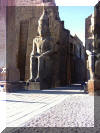 |
The Luxor temple entrance with the double crown and stuff.
And all over the place you had these kings sitting on their
thrones. The biggest king of them all, Ramses the II, ruled for 67 years and
died at 92, leaving 111 sons and 67 daughters behind to fight over the
throne. |
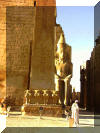 |
 |
Obelisks were all over the show. The most popular piece of
stone to carve. Tanya and our guide Abrahm. Tanya listening
intensively to all the kingdoms of ancient Egypt. |
 |
 |
One popular outing was a balloon ride early in the morning
to watch the sun rise. They flew during the day as well. And
talk, Abraham did in his broken and hard to understand English. |
 |
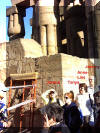 |
And all over the show, we looked at stones and stones and
stones. Great. Here is column alley. Stacks of goodies for
the special interested ones. |
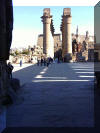 |
 |
This is sphinx alley. All these figures sitting there for
eternity all lined up. In the papyrus factory where we were taught the
skills of how to make papyrus the old fashion way as the Egyptians did it. |
 |
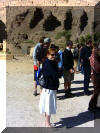 |
Then it was off to the Karnak temple complex, the biggest
religious complex in the world. And here it was even more
stones. At this point in time, most of us had reach the saturation point.
Stone is stone. |
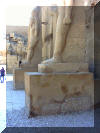 |
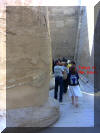 |
Tanya wandering around in the temple courts as the rest of
us feeling rather empty and tired. She slept for four hours after coming
back on the boat. It was very strenuous to walk the whole morning like this.
All the nice girls in our group lined up to listen to a cock story about
Ramses' II and how he lost his battle. |
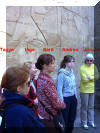 |
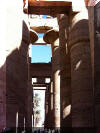 |
And wandering we did among thousands of columns in all sizes
and heights. And the most favourite stone figure to make was
the obelisk as seen here. |
 |
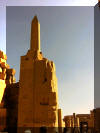 |
Not only put they obelisks on the ground, but on top of old
buildings as well. And the tallest of the all was made by
the only female pharaoh of the all, Hathsepsuts. Impressive. |
 |
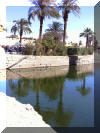 |
And when up to 10 000 people needed a drink in the heat,
they had to have a big cup. 140 by 80 meters long cup and some four meters
deep filled with bilharzias water from the Nile. Today, 80% of the farmer in
Egypt is suffering from this disease, caused by a snail in still water.
Bilharzias. Not nice. Slowly eats up your inside. Who needs HIV? Not Egypt. |
|
